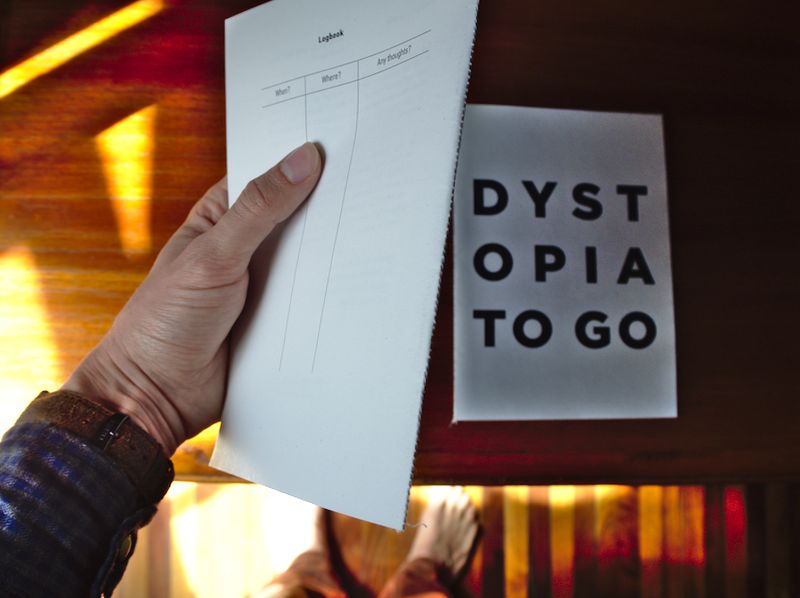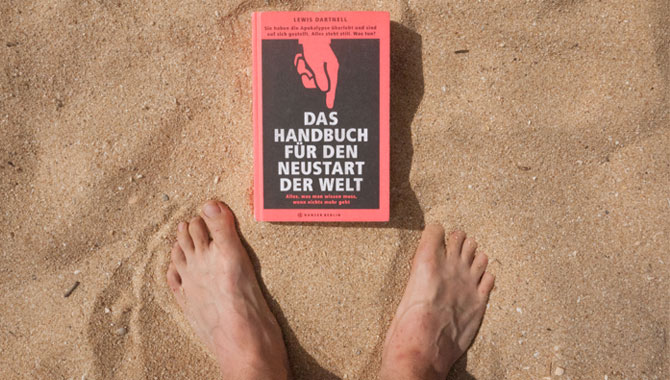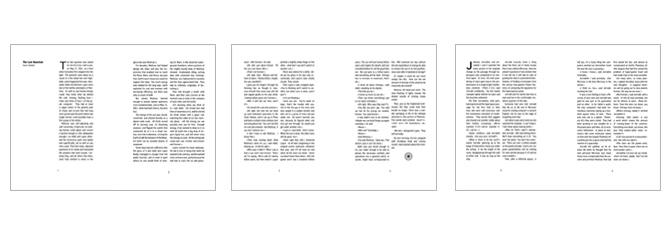As I did for 2013, 2012, 2011 and 2010 here comes my recap for 2014.
Typography
In 2014 I dived further into typography, my main highlights were getting more comfortable with XeLaTeX, reading Robert Bringhurts “The Elements of Typgrahic style” and typesetting more content (especially the Short Story To Go). I also took a lot from hearing the lecture “Digital Typograhy’‘ by Dr. Borchert at Ulm University. Within the lecture I learned PostScript, MetaFont, TeX internals and more typographic knowledge. The lecture was an ideal complement to my interests and already existing knowledge. This was actually the second time I visited the course, the first time (2-3 years ago) it was too advanced for me.
Typography is to literature as musical performance is to composition: an essential act of interpretation.
—Robert Bringhurst
The font I liked most was Lucas de Groots TheAntiquaB, which is the font used by the magazine “Der Freitag”. De Groot has e.g. also created the font for the “taz” and “Der Spiegel”. Another font I came to like very much is Friedrich Althausens (free) Vollkorn Font.
Best Paper
I finally read the original paper on the vi editor by William Joy and Mark Horton: “An Introduction to Display Editing with Vi”. Even though I work with vi on an everyday base, I still took a lot from the paper. In 2014 I strongly continued my efforts to understand the tools I regularly use, I feel that this paper deppened my understanding of the vi editor.
Best Photo
Well, this of course has to be the monkey selfie (see the Wikipedia if you missed out on that event).
Best Articles
In this article Markus describes his thought process on how to license his own work, discussing different licenses and at last deciding to put everything within the Public Domain (the article is in german).
“Autonome Fahrzeuge: Wenn Software über Leben und Tod entscheidet ” is an article on some interesting thought-experiments: what if an autonomous vehicle has to get out of the way and unavoidably will ram either car A or car B — which criteria should be taken to decide which car to ram?
“How Wolves Change Rivers” is an interesting article on the vanishing and re-introduction of wolves in a nature reservoir. The article highlights which unforeseen changes thus have happened to the landscape.
I love book covers. This article is full of brilliant ones.
The local press surprised me with an interesting article on underground passages in Ulm: “Zwischen den Bahnhöfen Ulm und Stuttgart”.
Best Blog Posts
I found this post a nice collection of LaTeX/XeTeX features: “Beauty of LaTeX”.
“How to Write a Git Commit Message” held some insights and improved my way of writing commit messages.
“Riding with the Stars: Passenger Privacy in the NYC Taxicab Dataset” is a post on the de-anonymization of data in a dataset released by the New York City Taxi and Limousine Commission. The author describes his process in detail.
Best Podcast
This is an easy decission: Hoaxilla #107 – ‘Waldorf-Schule’. This was one of those podcasts which totally opened my eyes. I grew up in a region where the so called “Waldorf-School” was a common thing and I never gave it much thought. I knew some people who went there and always somehow associated it with an education with a focus on nature. Little did I know of all the esoteric parts. It got even worse: after further reading on the topic it occured to me that some popular medicine manufacturer is also heavily based on Anthroposophy and some popular agriculture labels as well (German Wikipedia Page). Oh my.
Books
I did a separate post on that topic.
Own photos
I like the two uppermost photos in the “Backpacking México and Guatemala” post a lot. I am also very satisfied with this photo, which I took on the Isle of Seurasaari whilst visiting friends in Helsinki:

Music
The Killers — Romeo and Juliet, Chet Faker’s “Thinking in Textures” album, the Milky Chance “Sadnecessary” album, Tom Odell’s “Another Love”, Kendrick Lamar, Okta Logue.
Technical Stuff
Been using Arch Linux for the most part of 2014, I am very satisfied to finally having made the switch. Stuff I work with each day: tmux, ksh, mmh, nvi, git, dwm, uzbl, firefox, spotify. The tool that improved my workflow most in 2014 is mmh, a mail client in Unix style.
Words which stuck
Man’s mind, once stretched by a new idea, never regains its original dimensions.
—Oliver Wendell Holmes
Weil, so schließt er messerscharf,
nicht sein kann, was nicht sein darf.
—Christian Morgenstern (from the poem “Die unmögliche Tatsache”)
Imagining the future is a kind of nostalgia. (…) You spend your whole life stuck in the labyrinth, thinking about how you’ll escape it one day, and how awesome it will be, and imagining that future keeps you going, but you never do it. You just use the future to escape the present
—John Green, Looking for Alaska
Each word I write drops a little more of me onto the page. In time, I will be the book, the book will be me, and the story will be told.
I found this definition of privacy very striking:
Privacy is the condition of being protected from unwanted access by others.
—Sissela Bok
Own Projects
Did a lot of stuff in 2014, the most important ones to me were:
The GTFS visualizations
Once I had the idea, I described and sketched it to a guy at university. He told me it was “senseless”. This decreased my motivation enormously. However, I still managed to finish it. The GTFS visualizations have been very nicely received and I am quite proud of this project. Others have done visualizations for other cities with the tool or extended the project. I printed two DIN A1 posters and since early 2014 they are now proudly decorating our living space.
The Short Story 2 Go was a great success. I am very proud on this project.
With the Scratches project I am also very satisfied. Still looking for a way to present the resulting images in an exhibition or something similar.
I had the idea for the reworking typography series in mind for a long time. In 2014 I finally managed to finish two pieces: The Last Question and Hibernation.
The “Kunst oder Kitsch?”-Installation was a “real-world” project and I learned a lot from building an installation that ran for three months and had a couple thousand visitors.
The fragdendienst-project was probably one of the society-relevant projects I did so far. I am proud of the reality-affecting context of the project and the fact that it runs in production.
Also I finally took the time to complete some unfinished projects:
Comic Strip – Why you shouldn’t mail *.doc files
The Principles of Datalove — Audiomashup
Exploring the ZEIT ONLINE API
In 2011 I did a project — Ulm Timelapse. Dirk Maasen has recut the video into a visual accomposition to fit his musical piece Dirk Maassen feat. An imaginal Space – Lichter. The resulting video is amazing and I could not have wished for such a beautiful work building upon stuff which I did.
Good decisions
In early 2014 I switched my newspaper subscription from the taz to Der Freitag. This has proven to be a very good decision. I draw a lot from regularly reading it, mainly improving my general knowledge and staying informed on what happens in the world. I find that reading a newspaper gets me to read articles, which I would normally not have read when glancing through online news sites.
Another good decision was to look after always having fresh plants in the kitchen. I found this to be uplifting.
University Life
Since April 2014 I have been working on the Mobile and Ubiquitous Computing Project at university. This has been a lot of fun for me, I haven’t written anything on this blog since, but I will after the project is finished (probably in April).
As part of my resarch assistant job at the university I have been working with the OptiTrack system. This is an expensive, professional optical tracking system and it was interesting to see how one develops applications for such a system and interacts with the API.
Best movie
A local cinema had a series of older movies running, I was especially keen by the Banksy movie “Exit Through the Gift Shop” on the topic of Street Art. I found the movie to be very inspiring and I was very enthusiastic for the days after watching the movie.
Looking forward to 2015
In 2015 I want to focus on my Master degree. I aim to finish it in the winter semester of 2015 (meaning I would be finished by April 2015). I strongly want to finish this chapter of my life and start towards new things.






